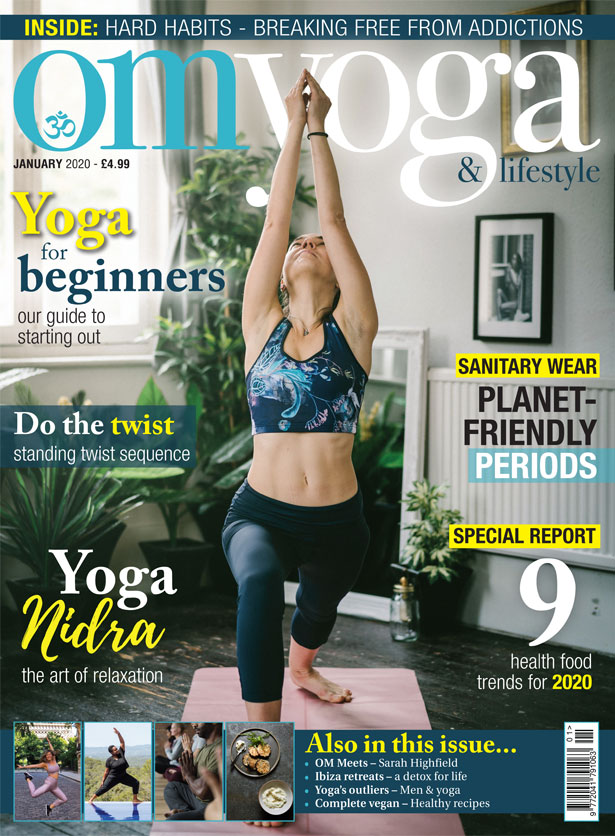
Set your intention
Create a healthy new you this year using the power of intention and other yoga tools. By Anna Brook
New Year is the perfect time to take stock of where we are and consider intentions or resolutions for the future.
This focus on being focused on driving desires or intentions in life has been used for thousands of years in the yogic tradition.
The ancient Vedic text the Upanishads tells us that the power of intention sits at the heart of what we create in our lives: “You are what your deepest desire is. As your desire is, so is your intention. As your intention is, so is your will. As your will is, so is your deed. As your deed is, so is your destiny.”
This empowering point of view puts us firmly at the driving seat of our lives. If things aren’t going how we’d like to, perhaps there is something lurking in our subconscious blocking us?
Although we can set intentions at any time, the new year and holiday season is often a time where many of us might be free from work, so there is often a collective period of reappraisal.
Becoming more healthy and losing weight are common intentions — yet what would you really like to bring into your life?
In a journal you could consider the following:
Reflect
What went well?
What will you remember? For example, experiences/people who inspired you. Why did they inspire you? Where there any great challenges? What learning could you take from them? What will you cultivate? Yoga teacher Rod Stryker talks about there being four desires or drives of the soul.

Dharma: The longing for purpose. The drive to be and become who you’re meant to be.
Artha: Is the means necessary to accomplish your Dharma — so acquiring the material resources such as food, money, physical wellbeing and a roof over your head.
Kama: Is the drive for pleasure of all kinds — closeness and intimacy, beauty, family, art and friendship.
Moksha: Is the longing to be free, to experience unfettered awareness, to be completely unburdened and to be free of the limitations of the three other desires.
Does one of these stand out most for you at this time in your life? Write down your reasons for this.
Setting your intentions
Write a list of your intentions for the year. Areas of your life to consider may include career, relationships, finance goals or health objectives.
Write these in sentences as if they are already happening.
For example: I make time for my family each day.
My new business is a great success.
I am taking time to keep myself healthy and eat well. I attend a yoga class every week.
Sankalpa
You may like to consider an overall desire or intention for the year. This can be particularly potent if used during Yoga Nidra or ‘yogic sleep’, a deeply restorative practice. In yogic terms this type of intention is named a Sankalpa. Again, state this in the present tense as if it is already happening.
Swami Satyananda Saraswati writes: ‘Anything can fail you in life but not the Sankalpa made during Yoga Nidra’. For example: I am grounded and kind to those around me.
Create a reminder
You may like to create a mood board or visual reminder of your intentions and Sankalpa. Have fun using colour and materials to bring this about — either using paper and pens/paint or perhaps on your computer. Create something you will want to look at again and again. This is how your intentions seep powerfully into your subconscious and flower in reality.
Gratitude
Write at least 10 things you most appreciate about your life. You may like to continue this practice daily, writing 5 — 10 things per day in your journal.
Anna Brook is a yoga teacher based in Margate. She teaches on regular yoga retreats (annabrookyoga.com)




